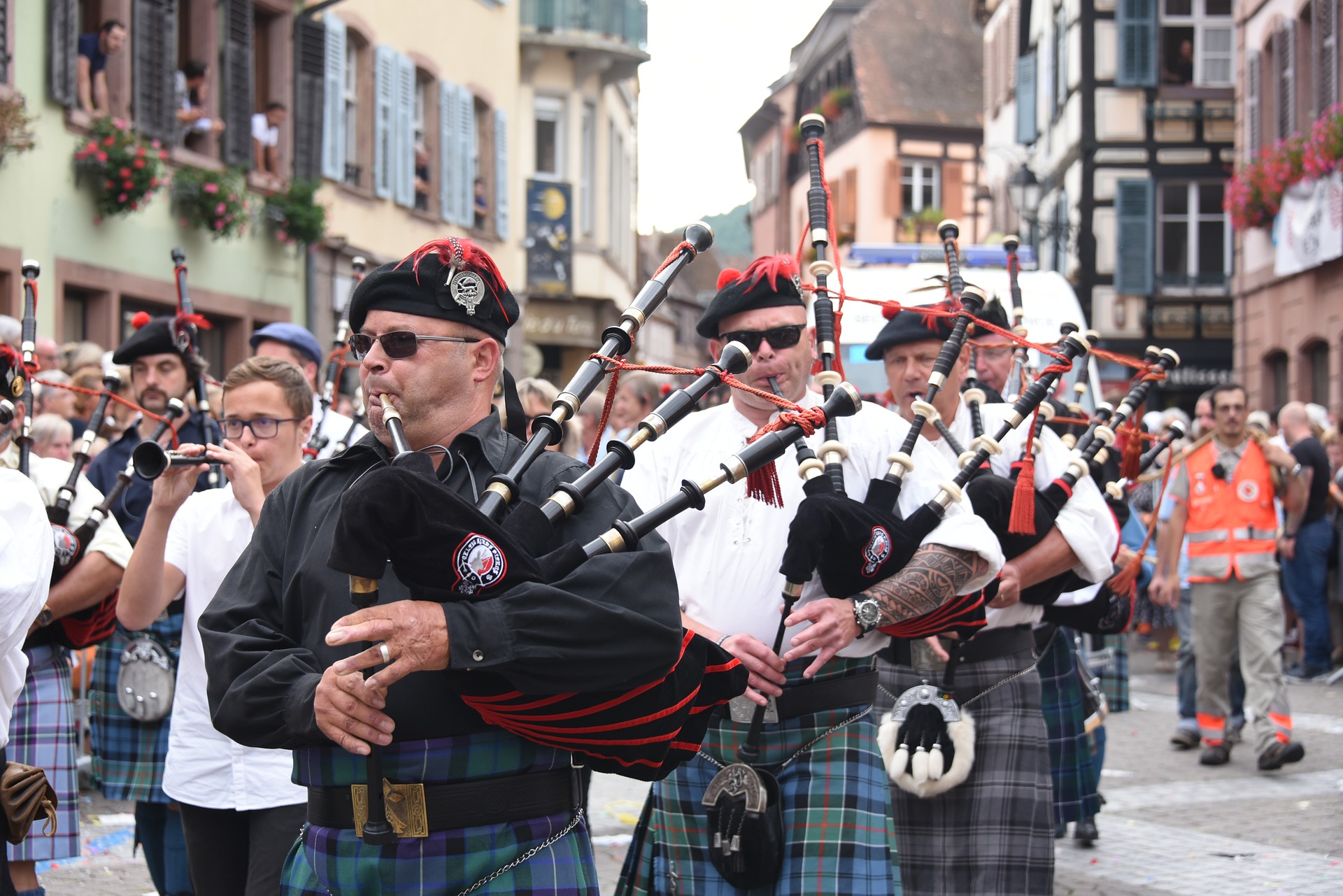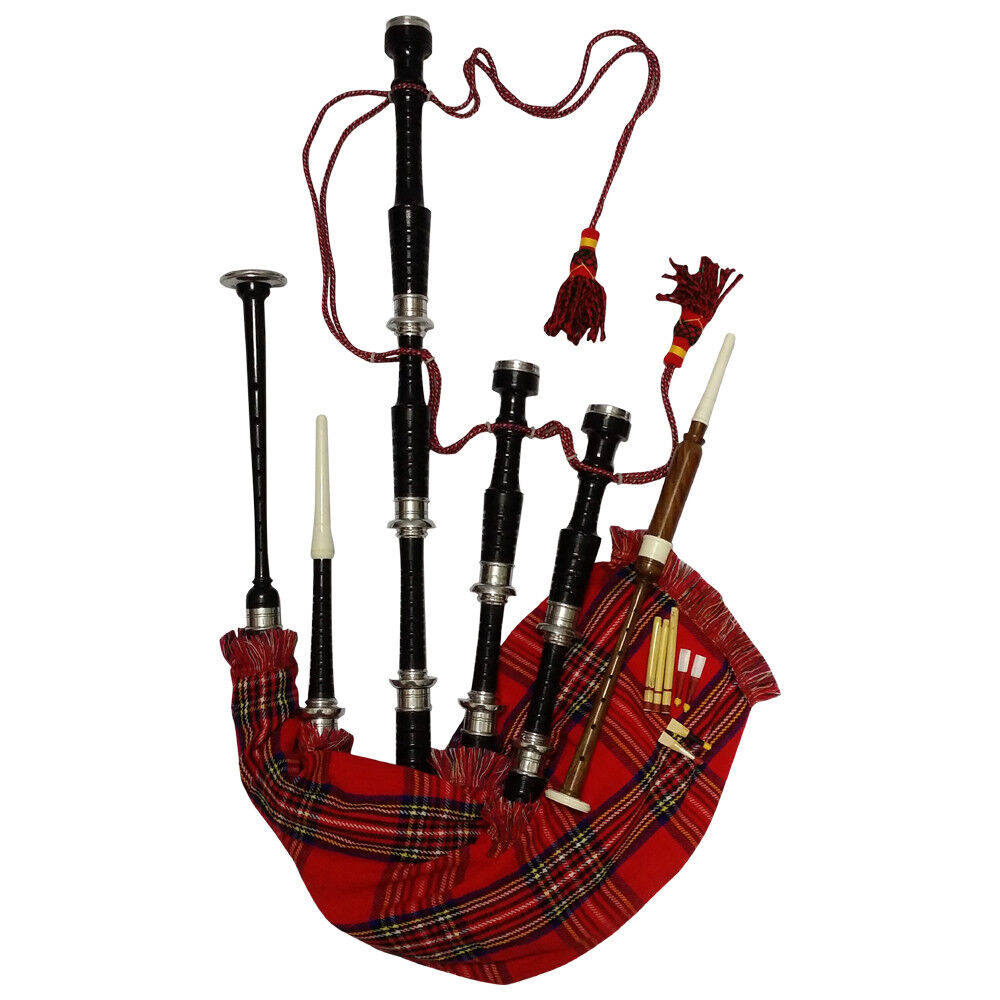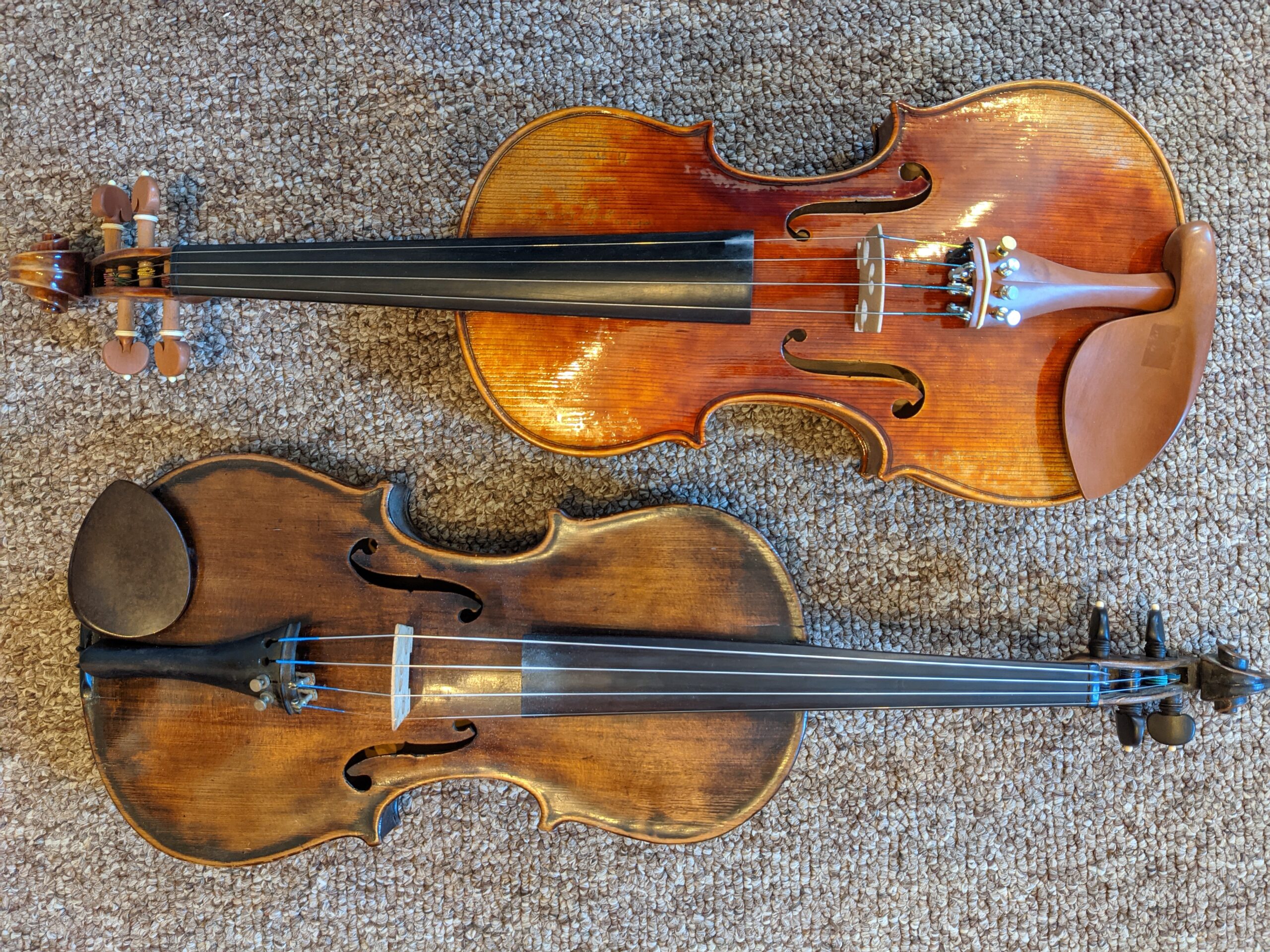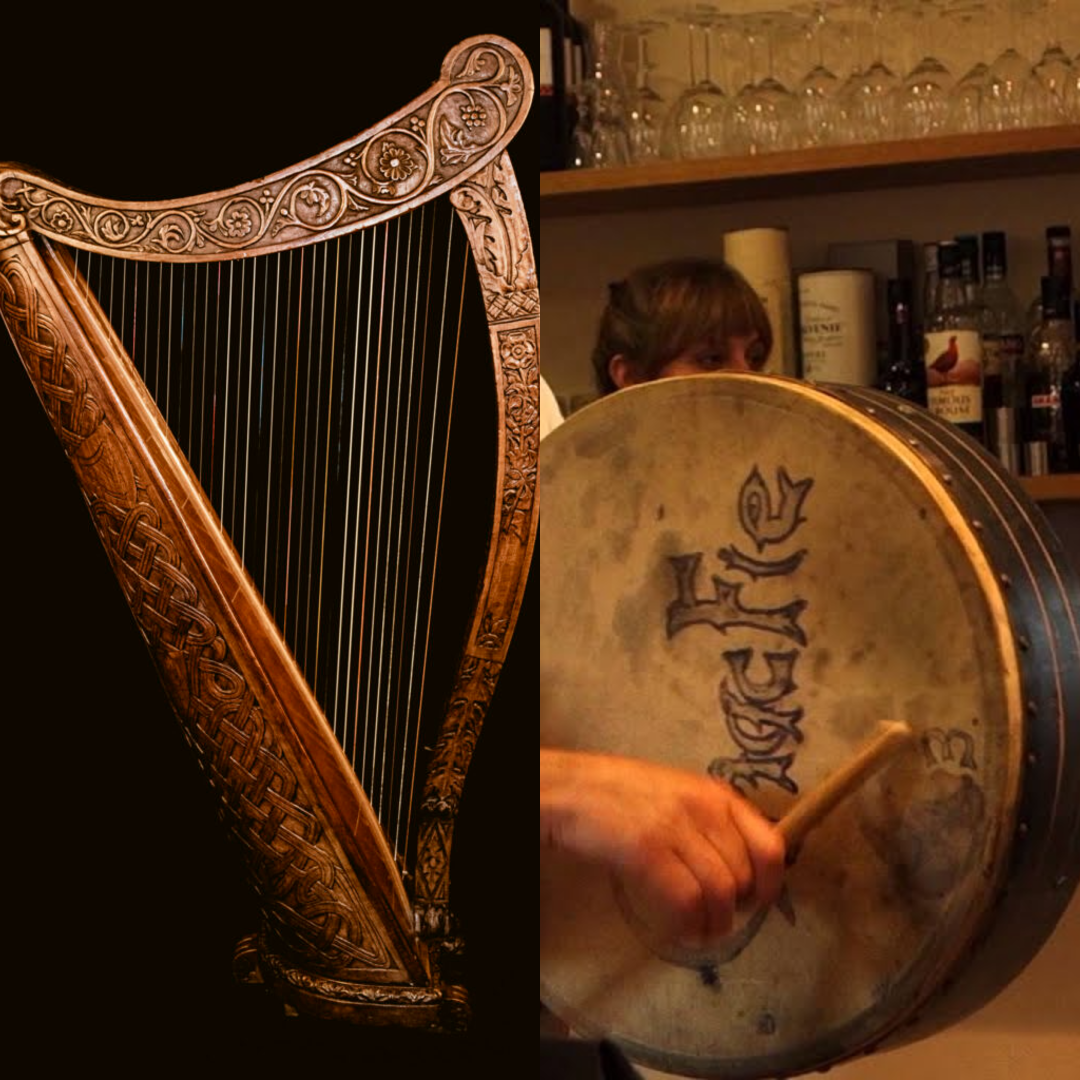Traditional Scottish Music - History, Instruments, & Iconic Songs
For centuries, traditional Scottish music has brought people together through powerful ballads and spirited dance tunes. Here’s what makes it so special.
Mar 12, 20252.8K Shares55.6K Views

Scotland's musical heritage is rich and layered, shaped by centuries of history, invasions, and evolving social and cultural dynamics. From ancient bards to contemporary bands, Scottishmusic remains integral to national identity and plays a pivotal role in global music scenes.
Let's take a stroll through the heart of Scottish folk music, discovering how the stories, the instruments, and even the different corners of Scotland weave together to create those melodies that just stay with you.
The Roots Of Scottish Music
Early Origins
Scottish music's earliest evidence can be traced to the ancient lyres and harp-like instruments found on the Isle of Skye, dating back to the Pictish period. Early instruments, like the lyre, are believed to have influenced the later development of stringed instruments in Scottish culture. The presence of these early instruments in Pictish art underscores music's importance in ceremonial and social contexts.
In medieval times, bards were crucial to Scottish society, weaving stories and preserving history through song. They played a key role in keeping the cultural fabric intact, whether performing in royal courts or common households.
Music was often used to honor kings, celebrate victories, or tell stories of love and loss, making it an essential part of Scotland's societal structure.
Influence Of Celtic Traditions
At its core, Scottish music shares many characteristics with broader Celtic traditions. Music from Scotland, Ireland, Wales, and Brittany often uses modal scales, ornamentation, and a heavy emphasis on improvisation.
In particular, the influence of Celtic music can be seen in the intricate, lilting rhythms and harmonies that define traditional Scottish folk music.
The Vikings and Norse invaders also left their mark on the Scottish sound, especially in the Orkney and Shetland Isles. In these regions, music often blends Celtic traditions with Nordic influences, creating a unique regional style. This mixing of cultures has made Scottish music an intriguing, ever-evolving tradition.
The Impact Of The Reformation
The Reformation had a significant impact on Scottish music, especially with the rise of the Presbyterian Church. During this period, the Kirk attempted to suppress secular music and dance, seeing it as sinful.
Many folk music traditions were forced underground, but the resilience of the Scottish people ensured that traditional songs and instruments persisted, albeit in more private settings.
Key Instruments And Musical Styles
The Great Highland Bagpipe
No instrument is more synonymous with Scottish music than the Great Highland Bagpipe. This iconic wind instrument has a deep, powerful sound that resonates with both majesty and melancholy.
Historically, the bagpipes were used in military contexts, often to rally troops or mark ceremonies. The bagpipe's distinctive sound became a symbol of Scottish identity, particularly during the Jacobite uprisings and other key moments in Scottish history.
Famous pipers like John MacColl and the legendary Seumas MacNeill helped define the tradition and bring the bagpipes to a global stage, ensuring its place at the heart of Scottish music. Today, bagpipe music can be heard at celebrations and ceremonies, and it remains a staple of Scottish folk ensembles.
The Fiddle
The fiddle has a long and storied history in Scotland. Evolving from the European violin, the fiddle gained prominence in Scottish society by the 17th century.
Unlike classical violinists, who typically play in a more formal setting, Scottish fiddlers use the instrument in folk music, often improvising and playing in a lively, rhythmically-driven style.
Renowned fiddlers like Niel Gow and Jean Redpath helped shape the legacy of Scottish fiddling, ensuring its continued presence in both traditional and contemporary music.
Today, fiddles remain at the center of Scottish folk bands, alongside bagpipes and drums, driving the fast-paced energy of reels and jigs.
Other Key Instruments
In addition to the bagpipes and fiddles, other instruments such as the clàrsach (a small harp), bodhrán (a hand-held drum), and the accordion play key roles in shaping the distinct sound of Scottish music. The clàrsach is one of the oldest instruments in Scotland, with roots that trace back to medieval times.
While its popularity waned after the 18th century, the clàrsach is experiencing a revival, as artists embrace its ancient sound and incorporate it into both traditional and modern folk bands.
The accordion, introduced in the 19th century, has also become a key instrument, particularly in dance bands that perform at ceilidhs, the lively social gatherings that bring communities together through music and dance.
The diversity of Scottish music extends beyond the instruments.
- Folk Songs:A rich tradition of folk songs exists in Scotland, encompassing ballads, laments, work songs, and love songs. These songs tell stories of love, loss, war, and the natural world, reflecting the experiences and emotions of the Scottish people.
- Dance Music:Scottish dance music is renowned for its lively and energetic rhythms. Reels, jigs, strathspeys, and hornpipes are just a few of the dances that have captivated audiences for generations. These dances are often accompanied by lively fiddle tunes, driving rhythms from the bodhrán, and the powerful drone of the bagpipes.
- Pibroch:Pibroch is a highly sophisticated form of bagpipe music, characterized by its intricate melodic lines, complex ornamentation, and profound emotional depth. It often reflects themes of heroism, sorrow, and the changing seasons, reflecting the profound connection between the Scottish people and their environment.
Key Genres And Styles In Scottish Folk Music
- Ballads and Airs: These slow, melodic tunes are an essential part of the Scottish folk tradition. Ballads often tell tales of love, tragedy, or historic events, while airs serve as instrumental pieces that carry emotional depth. Both forms help to preserve Scotland's cultural heritage and offer a window into its past.
- Jigs and Reels: These fast-paced, energetic dance tunes are the heart of Scottish festivals. Played on fiddles and accompanied by the rhythm of the bodhrán, jigs and reels are performed at ceilidhs and other celebrations, creating an infectious atmosphere.
- Ceilidh: The ceilidh is more than just a music style; it’s a tradition of social dancing accompanied by live music. Typically featuring lively reels, jigs, and strathspeys, ceilidh music is meant to bring people together. The dances are often simple, allowing for wide participation, making them a beloved feature of Scottish gatherings.
- Celtic Rock: Emerging in the 20th century, Celtic rock fuses traditional Scottish folk music with electric instruments, forming a modern, dynamic sound. Bands like Runrig and Capercaillie have brought the blend of rock, folk, and Gaelic culture to new audiences around the world.
The Evolution Of Scottish Music
19th-Century Revival
The 19th century witnessed a renewed interest in traditional music, driven by a combination of academic curiosity and a growing sense of Scottish national identity.
Figures like Francis James Child, a Harvard professor, played a pivotal role in this revival, compiling a monumental eight-volume collection of "The English and Scottish Popular Ballads," which significantly influenced subsequent generations of folk musicians.
In Scotland, collectors like Reverend James Duncan and Gavin Greig dedicated themselves to preserving the rich oral tradition of folk songs, meticulously documenting hundreds of songs, primarily from Aberdeenshire.
This renewed interest in traditional music had a profound impact on classical music in Scotland. A "national school" of composers emerged, drawing inspiration from Scottish folk melodies and incorporating them into their orchestral and operatic works.
Composers such as Alexander Mackenzie, William Wallace, Learmont Drysdale, Hamish MacCunn, and John McEwen, while influenced by European classical traditions, infused their compositions with Scottish themes and folk melodies, creating a unique and distinctive sound.
The 20th-Century Revival
The 20th century brought further significant developments. Following World War II, while traditional music faced challenges in some parts of the country, it remained a vibrant force in many communities.
Figures like Alan Lomax, an American musicologist, played a crucial role in documenting and popularizing Scottish folk music through his recordings and radio broadcasts.
The establishment of the School of Scottish Studies at the University of Edinburghin 1951 provided a crucial platform for research, collection, and dissemination of traditional music.
The 1960s witnessed a flourishing folk club culture across Britain, with Scottish folk clubs playing a significant role in fostering a renewed appreciation for traditional music.
These clubs provided a platform for both established traditional musicians and emerging artists, fostering a vibrant and dynamic community. The emergence of figures like Ewan MacColl, a prominent figure in the British folk revival, further fueled the resurgence of interest in traditional music.
The Rise Of Celtic Rock
Alongside this revival, a more commercialized strand of popular Scottish music emerged, often drawing on stereotypes and romanticized images of Scottishness.
Television programs like "The White Heather Club" popularized a particular image of Scottish music, featuring performers like Andy Stewart, Moira Anderson, and Kenneth McKeller. While immensely popular, this style of music was often criticized for its stereotypical portrayal of Scottish culture.
The fusion of British folk music with American styles, such as blues and jazz, led to the emergence of folk baroque, pioneered by influential figures like Davy Graham and Bert Jansch.
This innovative approach blended traditional folk elements with progressive rock and jazz influences, creating a unique and distinctive sound.
Top 10 Traditional Scottish Music
Traditional Scottish musicis an embodiment of the country’s rich cultural heritage, with songs that span centuries, connect generations, and continue to inspire musicians worldwide. Here are ten iconic tracks that represent the essence of Scottish folk music:
1. “Auld Lang Syne”
A song that transcends Scottish borders, "Auld Lang Syne" is one of the most famous traditional Scottish songs. Written by Robert Burns in 1788, it’s sung worldwide to mark the New Year, celebrating friendship and nostalgia.

💥AULD LANG SYNE 💥 Royal Scots Dragoon Guards💥
This simple yet poignant melody has become an anthem for bidding farewell and welcoming new beginnings.
2. “Loch Lomond”
A Scottish ballad known for its deep emotional resonance, "Loch Lomond" speaks of the heartbreak of separation. The song tells the story of two lovers, one bound for the "low road" and the other taking the "high road." It evokes the beauty of the Scottish Highlands and has become a symbol of national pride.
3. “The Skye Boat Song”
This haunting melody recounts the escape of Bonnie Prince Charlie after the Jacobite defeat in 1746. Its soft, lilting tune is accompanied by lyrics that describe his journey from the Scottish mainland to the Isle of Skye. The song is a poignant reminder of Scotland's turbulent past.
4. “Wild Mountain Thyme”
Also known as “Will You Go, Lassie, Go,” this beautiful Scottish folk song celebrates the natural beauty of the country. With references to the purple heather and mountain thyme, it invokes a sense of longing and love for the Scottish countryside. It's a popular tune at ceilidhs and other social gatherings.
5. “Flower Of Scotland”
A patriotic anthem of modern Scotland, "Flower of Scotland" was written by Roy Williamson of the folk group The Corries. It reflects on the Battle of Bannockburn, where the Scots triumphed over the English in 1314. The song has become a symbol of Scottish independence and pride.
6. “The Bonnie Banks O’ Loch Lomond”
Often confused with “Loch Lomond,” this version of the song specifically highlights the scenic beauty of the Loch and the bond between the Scottish Highlands and their people. Its powerful chorus evokes the image of the rolling hills and shimmering waters of Scotland.
7. “The Parting Glass”
A traditional Irish and Scottish folk song, "The Parting Glass" is typically sung at the end of a gathering or event. It is a heartfelt farewell song that reflects on cherished memories and bidding goodbye to friends and loved ones. Its mournful tone and reflective lyrics make it a beloved classic.
8. “The Atholl Highlanders’ March”
A lively and energetic piece, "The Atholl Highlanders’ March" is a staple in Scottish piping tradition. It’s typically played by bagpipes at ceremonial occasions and celebrates the regiment of the Atholl Highlanders, Scotland’s only legal private army. Its rousing rhythms are a signature of Scottish music.
9. “Highland Cathedral”
A relatively modern composition, "Highland Cathedral" is a magnificent and powerful piece that has become synonymous with Scottish national pride.
Often played at major events, including royal occasions, it blends traditional Scottish melodies with a grand, symphonic sound that makes it a contemporary anthem for Scotland.
10. “The Battle Of Stirling Bridge”
A song of historical significance, this ballad tells the story of the 1297 Battle of Stirling Bridge, a key victory in the Wars of Scottish Independence. It commemorates the bravery and leadership of William Wallaceand the Scottish rebels as they defeated the English forces. Its stirring melodies reflect the fierce spirit of the Scots.
Contemporary Scottish Music
The Modern Landscape
Today, Scotland's folk music scene is thriving, with both traditional forms and contemporary innovations continuing to capture the imagination of listeners worldwide.
Modern bands like Blazin’ Fiddles, Mànran, and Elephant Sessions have revitalized traditional sounds, blending them with genres like funk, jazz, and electronica. This ability to innovate while staying rooted in tradition ensures the future of Scottish folk music remains vibrant and relevant.
Contemporary Folk Bands
Bands like Blazin’ Fiddles and Mànran represent the new wave of Scottish folk, incorporating traditional instruments alongside modern arrangements. These groups use fiddles, bagpipes, and clàrsachs to create a sound that resonates with both traditionalists and younger generations, ensuring the continued popularity of Scottish folk music.
Folk Fusion
Many contemporary Scottish musiciansare embracing folk fusion, blending traditional Scottish sounds with rock, electronic music, and other genres. This blending keeps Scottish music dynamic and appealing to new audiences, ensuring its survival in an ever-evolving musical landscape.
Regional Variations
Scottish music exhibits a fascinating diversity across the country, with each region boasting its own unique character and style.
- The Highlands:Known for its rich Gaelic tradition, Highland music is characterized by the powerful sound of the Great Highland Bagpipe, intricate pibroch tunes, and haunting vocal harmonies.
- The Lowlands:The Lowlands have a distinct musical tradition, influenced by English folk music and characterized by lively fiddle tunes, vibrant dance music, and a strong emphasis on song.
- Orkney and Shetland:These islands exhibit a unique blend of Scottish and Norse influences, with a strong emphasis on fiddle music and English-language ballads.
- The Hebrides:The Hebrides, with their strong Gaelic heritage, are renowned for their distinctive vocal styles, intricate instrumental music, and a deep connection to the natural environment.
These regional variations reflect the unique history, cultural experiences, and social interactions of each community, contributing to the rich tapestry of Scottish music.
Festivals, Events, And The Future Of Scottish Music
Scotland boasts a vibrant calendar of music festivals and events that celebrate the richness and diversity of its musical heritage. The Royal National Mòd, a major cultural event, showcases a wide range of Gaelic arts, including music, literature, and drama.
Celtic Connections, held annually in Glasgow, has become one of the world's leading Celtic music festivals. This multi-disciplinary festival attracts a global audience, showcasing a diverse range of artists, from traditional musicians to cutting-edge contemporary performers.
These festivals and events play a crucial role in promoting and preserving Scottish music, providing a platform for emerging artists, fostering cultural exchange, and ensuring that this vital art form continues to thrive.
The future of Scottish music appears bright. Contemporary artists are pushing the boundaries of traditional music, seamlessly blending traditional techniques with modern influences, creating a dynamic and evolving sound.
The growing global interest in Celtic music and the increasing accessibility of music through digital platforms provide exciting opportunities for Scottish musicians to reach wider audiences.
However, challenges remain. Maintaining the connection between traditional music and younger generations, ensuring the sustainability of local music venues, and addressing the economic realities of a career in music are some of the key challenges facing the Scottish music scene today.
FAQs
What Are The Most Famous Scottish Folk Songs?
Some of the most famous Scottish folk songs include "Auld Lang Syne," "Loch Lomond," "Scotland the Brave," and "The Skye Boat Song." These timeless songs have resonated with audiences for generations and continue to be performed and enjoyed worldwide.
How Can I Learn To Play A Scottish Instrument?
There are numerous opportunities to learn to play Scottish instruments, including private lessons, group classes, and workshops offered by local music schools, community centers, and traditional music organizations.
Where Can I Experience Live Scottish Music?
You can experience live Scottish music at a variety of venues, including pubs, clubs, festivals, and cultural centers throughout Scotland.
What Is The Difference Between Pibroch And Folk Songs?
Pibroch is a highly sophisticated form of bagpipe music, characterized by its intricate melodic lines, complex ornamentation, and profound emotional depth. Folk songs, on the other hand, encompass a broader range of styles, from ballads and laments to lively jigs and reels.
How Has Scottish Music Influenced Other Genres?
Scottish music has had a profound influence on various genres, including folk rock, Celtic rock, and world music. Its distinctive melodies, rhythms, and instrumentation have inspired musicians around the globe, enriching the global musical landscape.
Conclusion
From its ancient origins to its modern adaptations, Scottish music remains a vital part of the nation's identity and cultural landscape. Its ability to blend tradition with innovation has ensured that it will continue to resonate with listeners around the world for centuries to come.
Latest Articles
Popular Articles



